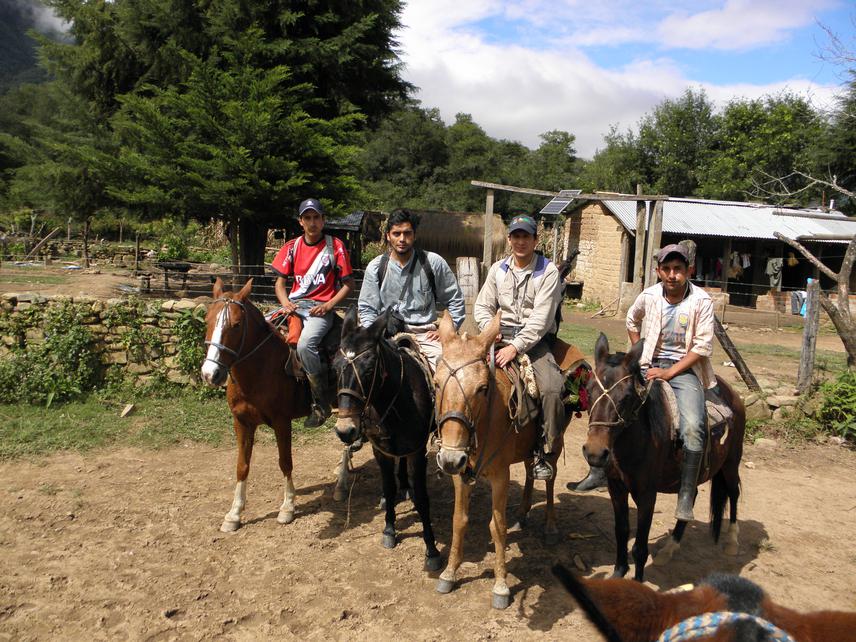Gustavo Arnaldo Marás
Evaluate the conservation status of the mammalian prey of jaguars with respect to different land use activities in the Argentine Yungas.

Miguel Hoyos (local field assistants ) Gustavo Marás, Hernán Terceros (agronomy student) and Italo Cardozo (local field assistants).
The jaguar is a species of urgent conservation priority, especially at the extremes of its distribution where it is catalogued as a critically endangered species. Animal populations that are located in the ends of their distribution could provide fundamental genetic resources in the face of future environmental changes. In Argentina one serious threat to jaguars is declining prey abundance. Human land-use activities are thought to be the main factor driving this decline. Our objective is to evaluate the conservation status of the mammalian prey of jaguars with respect to different land-use activities in the Argentine Yungas.
Within the distribution of the jaguar in the Yungas of the provinces of Salta and Jujuy, we will select three different locations with different types of management (livestock, forestry or no significant human activities). Through the use of camera traps, for each location we will analyse 1) the species composition of mammals that serve as jaguar prey and 2) habitat use and population density of the main prey species. Each location will have a grid of 16 stations of two camera-traps each, with > 5 km between stations, for large prey species and a grid of 20 stations of one camera-trap each, with 1 km between stations, for medium-size mammalian prey. We will repeat this sampling scheme three times (once a year) in each location. During the sampling periods the cameras will be activated for two months in a row.
The project´s results will be used to generate management proposals for the Yungas forest that include the conservation of the jaguar’s mammalian prey species. Different human land-use activities are highly likely to have notably different effects on the populations and diversity of those species. While the only way to examine “effects” is to perform controlled experiments, logistical and ethical issues prevent us from doing so. None-the-less, at the landscape level, comparisons of landscapes with different land uses and sound data on populations of the target mammal species in these tracts will provide strong evidence on how these different activities could affect the community structure of jaguar prey. This information will be shared with key stakeholders and will contribute to new management guidelines that enable production activities while simultaneously sustaining ecosystem conservation.